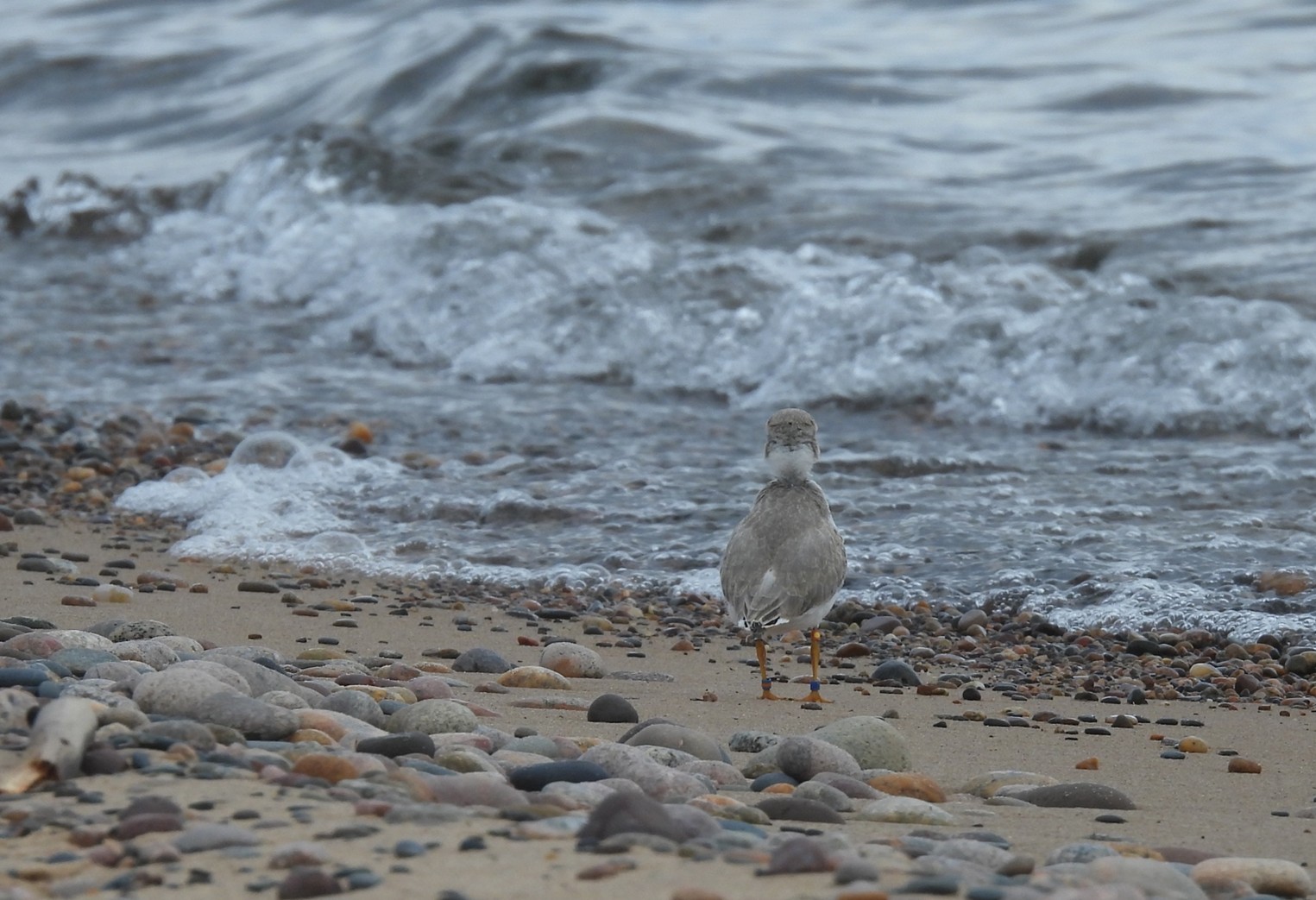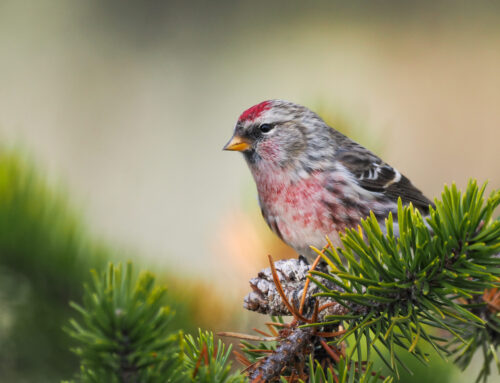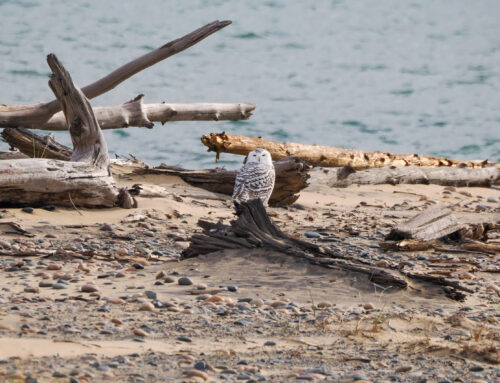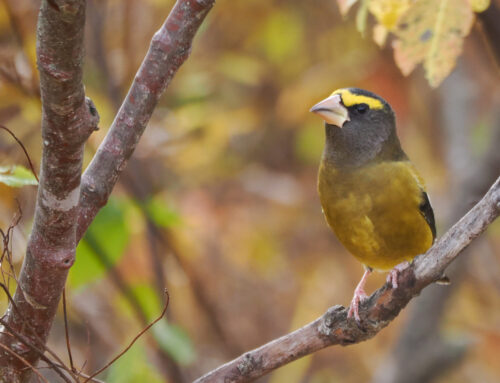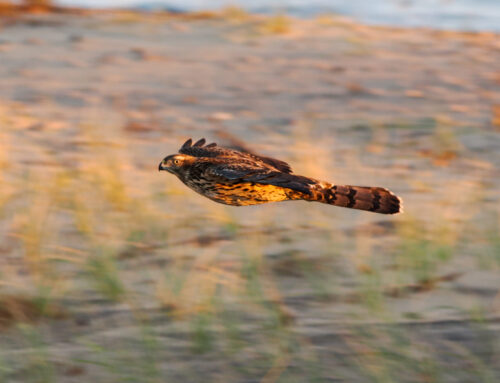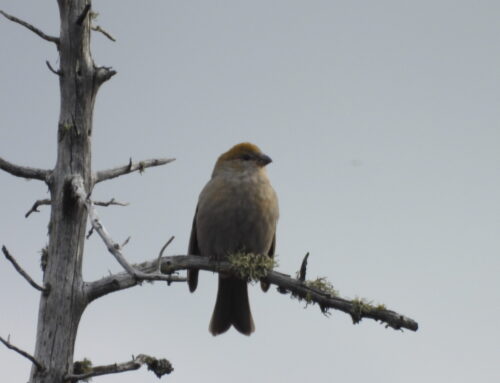Whitefish Point
Vie’s three chicks, once vulnerable tufts of fuzz atop two toothpicks, have developed into plump fledglings with defined feathers – of which they now use to take flight. Over time their jump tests increased in height and skill, indicating the chicks were progressing right on track.
The chicks’ fledging has made life far less worrisome, but has also made my job a bit more difficult. When the chicks were grounded, finding them was relatively easy and straightforward. I could depend on them being within a half-mile radius of the nest, usually given away by an alarm call from Vie. Now, if I’m lucky, I will find a chick in their once usual area, but struggle to sight the remaining family.
On Sunday, July 20, I spotted the Yellow dot chick at the eastern end of the closed area. As I headed West, I saw Vie flying around in front of the museum observation deck, peeping to guide her chicks. She stopped on the shore for a second, and then went back West to find her other chicks. I discovered Blue dot chick by the piles of driftwood a little further west, and trailed it as it headed in the direction of Vie. With everyone capable of flight, the chicks no longer stay together as a group. They now scatter indiscriminately, trying to follow Vie’s lead.
As for our captive reared ladies, I still have not seen Logger since July 11. The last day I saw Lovely was July 17. They have probably left for the summer.
On Tuesday, July 22, I only saw Yellow dot chick, and the following day, I was unable to find a single Piping Plover. I believe they are most likely foraging on habitat near the Point outside of my jurisdiction. Last year, a few locals observed a captive reared chick on mudflats off of Lake Superior on their property just South of the Point. There’s also a decent chance that Vie has decided to head South for Plover wintering grounds, and maybe the chicks have followed? But they seem awfully new to flying to start that journey. The upcoming days will shed light to better understand what’s going on.
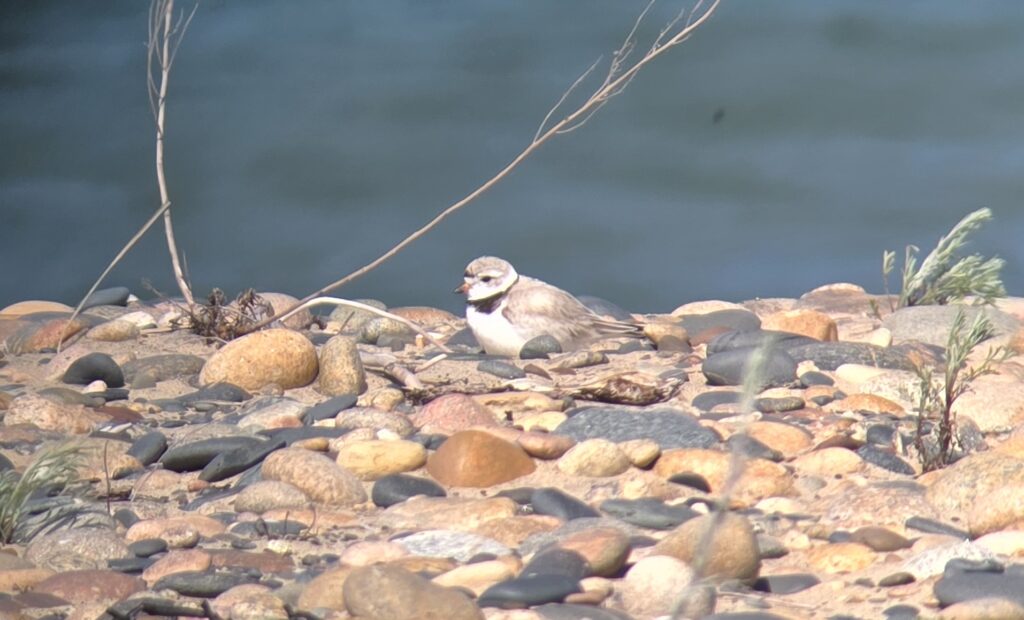
Vie rests on the ledge of the beach. Photo by Stephanie Owens
~ Stephanie Owens, 2025 Piping Plover Monitor
Featured Photo: Vie’s Yellow dot chick forages at the shore | Polly Sheppard
Piping Plover monitoring is a collaborative effort between Michigan Audubon and Seney National Wildlife Refuge (USFWS).
You can keep up with the 2025 Piping Plover action at WPBO by reading Stephanie’s blog posts and following WPBO’s social media (Facebook, Instagram, and X).
Stephanie Owens: 2025 Piping Plover Monitor
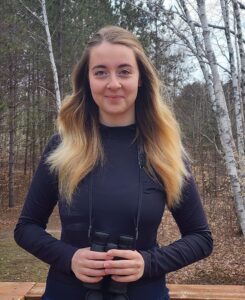 Having grown up in the Upper Peninsula of Michigan, an appreciation of the outdoors seemed inevitable for Stephanie. Walks in the woods with her father and high school science courses helped her identify this passion. In 2024, she earned a Bachelor of Science in Conservation Biology from Lake Superior State University, where she completed her senior thesis on the distribution of per- and polyfluoroalkyl substances in Eastern Upper Peninsula waterways. Now, with three seasons of PIPL monitoring under her belt, she looks forward to another summer with the U.P. plovers and returning to WPBO after a successful ’24 season. After the end of last season, Stephanie began her work at Eva Burrell Animal Shelter as a canine caretaker, fostering hope and love for all animals there.
Having grown up in the Upper Peninsula of Michigan, an appreciation of the outdoors seemed inevitable for Stephanie. Walks in the woods with her father and high school science courses helped her identify this passion. In 2024, she earned a Bachelor of Science in Conservation Biology from Lake Superior State University, where she completed her senior thesis on the distribution of per- and polyfluoroalkyl substances in Eastern Upper Peninsula waterways. Now, with three seasons of PIPL monitoring under her belt, she looks forward to another summer with the U.P. plovers and returning to WPBO after a successful ’24 season. After the end of last season, Stephanie began her work at Eva Burrell Animal Shelter as a canine caretaker, fostering hope and love for all animals there.

